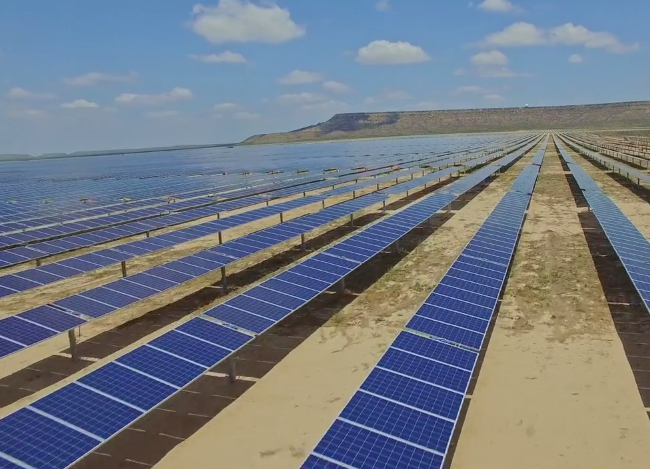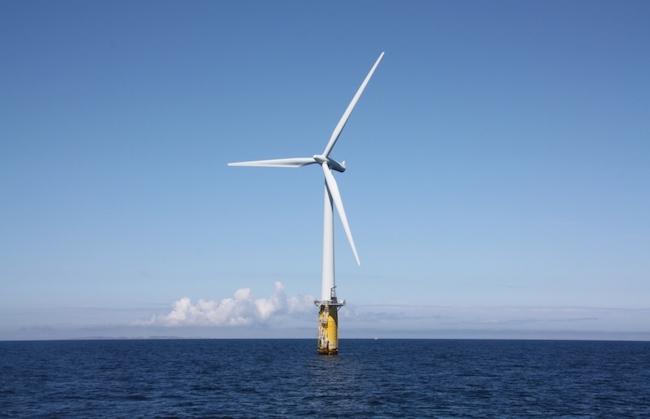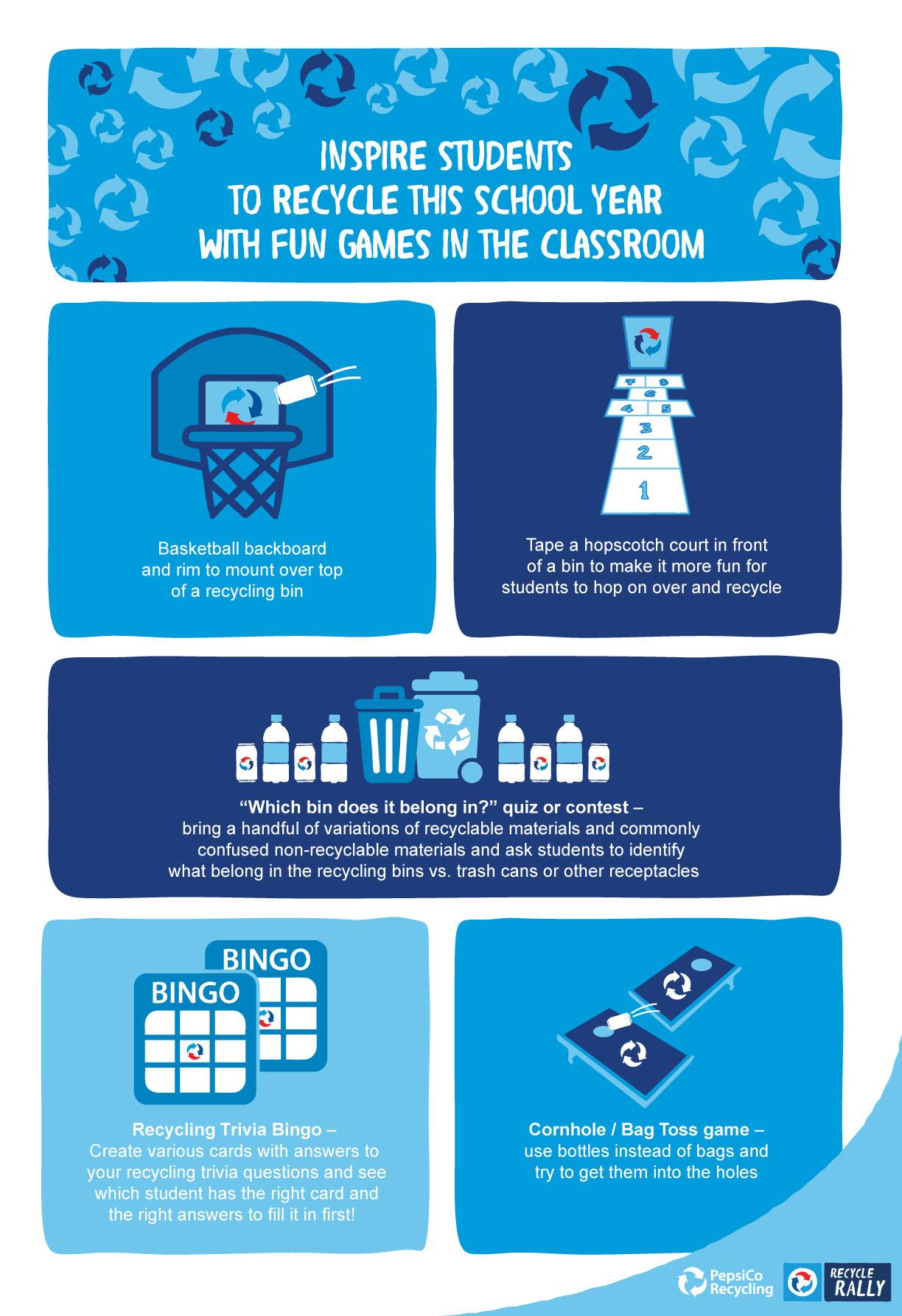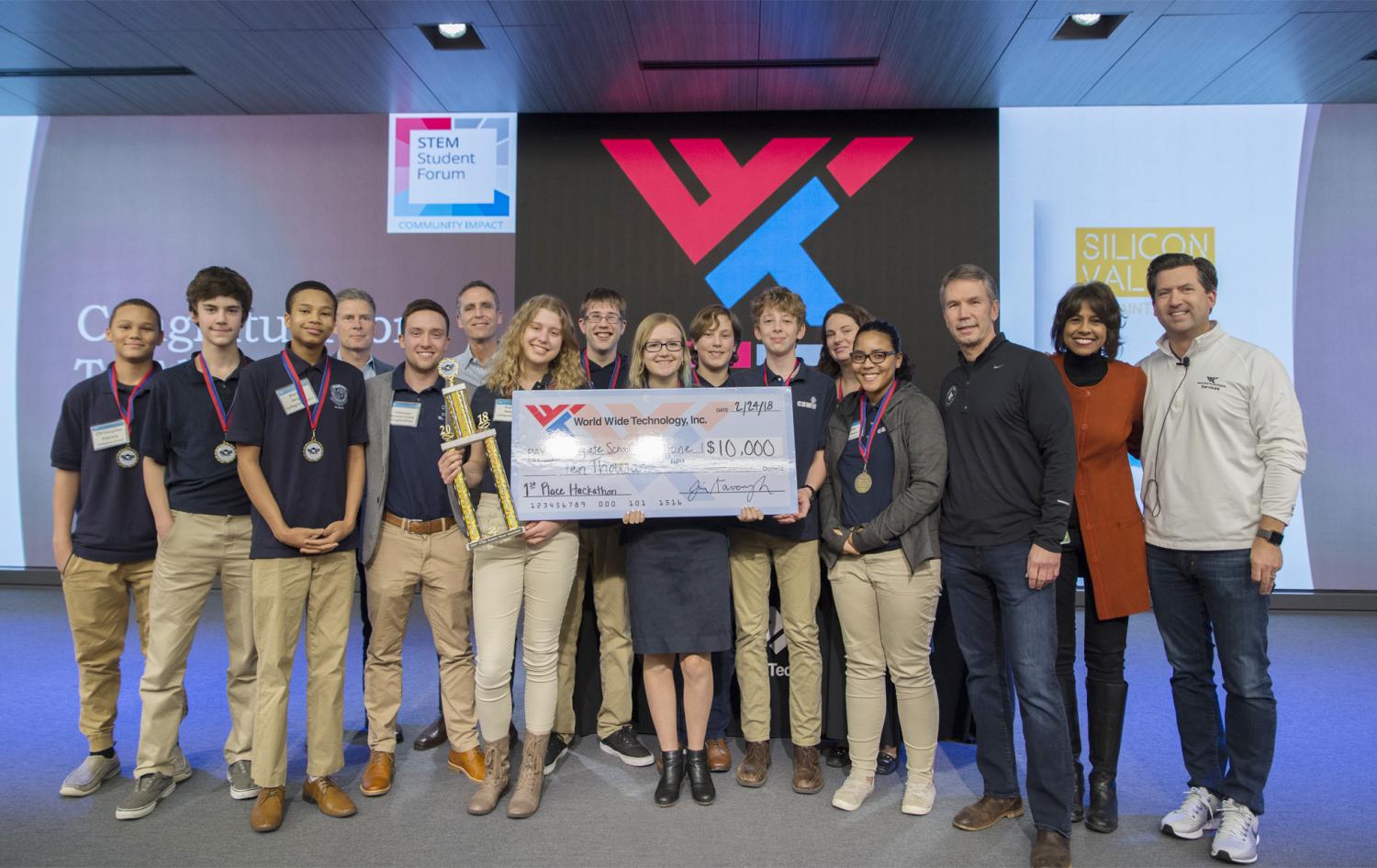Volkswagen's Lack of Corporate Transparency Still a Problem: U.S. Monitor


There have been high hopes for the recovery of Volkswagen’s reputation. The German car maker, once reputed to be a leader in clean energy strategies, saw its standing in the global automotive sector suffer three years ago when the company admitted it had falsified the emissions results for thousands of cars.
But second-chance options are often easier to negotiate if you hold the key to cutting-edge technology.
With the declaration two years ago that it planned to become the world's top electric car manufacturer and its assurance to government regulators that it planned greater transparency and changes to its corporate culture, it seemed possible that Germany’s largest car manufacturer would be able to put the legacy of its “dieselgate” scandal behind it.
A new report, however, by Larry D. Thompson, a former U.S. deputy attorney general who had been appointed to monitor Volkswagen’s corporate rehabilitation suggests that Volkswagen needs to do much more to capture that success.
So just what makes a successful reclamation of a company's reputation in the eyes of court-appointed monitors?
Thompson alluded that it’s the practical things – that ensure that there is less likelihood of a repeat scandal, like an active whistle-blower program that allows employees to bring problems to the fore without fear of retaliation.
And it’s finding a way to deconstruct Volkswagen’s rigidly centralized corporate culture to ensure more transparency. According to Thompson, that lack of transparency extended to a “reluctance to share certain information” requested by court-appointed monitors.
According to Matthias Mueller, the company’s former CEO, that corporate thinking is a reflection of the fact that some, nurtured by Volkswagen's old-school “centralistic leadership” are resistant to changes. “I don’t know if you can imagine how difficult it is to change the mindset,” Mueller said.
Meanwhile, Volkswagen AG’s current CEO, Herbert Diess, who assumed leadership in April, has his sights set on revamping the company’s automotive line as an indicator of the company’s dramatic change. The compelling ID Vizzion, an electric car that was unveiled at the Geneva Motor Show as a sleek, self-driving model that embodied all the glitz and glamour the show is known to extol, is Volkswagen’s newest image-changer and due to go on sale in 2020.
Diess has admitted, though, that changing the company’s corporate culture is paramount to Volkswagen’s success and that the company is trying to address those issues.
“I was already quite sure this company had to change because of what was happening in the industry,” Diess admitted to Fortune writer Vivian Walt last July. “But the diesel crisis has accelerated our change process quite considerably.”
Still, Thompson’s latest report is an echo of an earlier question: does Volkswagen appreciate that the company's image is for many, the first consideration when it comes to embracing innovation?
As Volkswagen board member Hiltrud D. Werner, who was appointed to oversee integrity and legal issues for the company, succinctly said, “[Dieselgate] is the worst industrial scandal in Germany since World War II. This will stay with the history of the company forever.”
In the past few months the company has dabbled in a number of interests that seem on the surface like unexpected goals for Volkswagen. But they beg the question of whether new product goals can inspire a new corporate culture. Tesla’s initial announcement by CEO Elon Musk that it would be “going private” garnered interest from the German carmaker, which may have seen the potential investment as a way of redesigning its image.
Boosting visibility through investment is not exactly a new idea. Companies do it all the time by investing or supporting campaigns that they publicly identify with. But will consumers that go shopping for an energy-efficient car will pick up that nuance if they believe that Volkswagen hasn’t been transparent in its corporate operations?
As Walt points out, tomorrow’s shifting market may be less about spacious, elegant electric cars consumers can buy in the “millions” and more about the practicality of transportation they can depend on – a viewpoint that is giving increasing power to the car, bike and bus-sharing industry.
Still, one thing that becomes abundantly clear to anyone who has visited Volkswagen’s Chattanooga, Tennessee factory is the company’s innate ability to sense the priorities of its consumers and to act on them. The factory’s green technology and state-of-the-art facilities aren’t just meant to keep up with today’s focus on environment. They reflect the administration’s intuitive understanding of how important it is to align its values – not just its products—to the expectations of its consumers.
Consumers today don’t just buy cars because they are innovative and compelling. They buy them because they trust the message that is sold with them. For Volkswagen’s legacy as a green manufacturer, unfortunately, that message is carried strongest by the steps it takes to redesign how it sees itself and operates, internally.
Image credit: Volkswagen
If ExxonMobil Can Learn to Like Renewable Energy, Anyone Can


The global energy giant ExxonMobil recently dropped a tantalizing hint that it is gearing up for a significant investment in renewable energy, but don't get too excited. The company's interest is apparently limited to deploying low cost renewables to help run -- and potentially grow -- its massive oil and gas operations in Texas.
That's not quite the same thing as diversifying its energy production portfolio to pump more wind or solar power into the national grid. Still, if ExxonMobil follows through on the new venture, it's yet another indicator that the U.S. coal industry has passed the point of no return.
More renewable energy for ExxonMobil, kind of
ExxonMobil has actually been dabbling in renewable energy for a number of years, with a particular emphasis on algae biofuel. That effort is apparently aimed at leveraging the company's considerable experience with liquid transportation fuels. Other than that, the company has not made any decisive move to diversify its portfolio.
ExxonMobil's stubbornness is a stark contrast to other legacy oil and gas companies that have invested significant dollars in wind farms and solar arrays in recent years. Statoil and Royal Dutch Shell are two good examples. BP is another one, with its recent acquisition of the solar company LightSource.
In that context, the news about ExxonMobil's foray into renewable energy looks relatively insignificant. Bloomberg reports:
The largest U.S. oil company sent out a request for proposals with a June 8 deadline, inviting solar or wind power suppliers to pitch contracts that would last 12, 15 or 20 years, according to a document obtained by Bloomberg and people with knowledge who asked not to be named discussing confidential matters. Exxon, based in Irving, Texas, is seeking at least 100 megawatts and would consider proposals for more than 250 megawatts.
As Bloomberg reporters Brian Eckhouse and Kevin Crowley describe it, ExxonMobil is seeking wind or solar power purchase agreements for its operations in Texas.
Power purchase agreements have become a familiar source of financing in the renewable energy field. They enable property owners to get wind turbines or solar panels built on their property, without having to pay up front for the installation. The property owners pay off the cost through their monthly electricity bills.
A similar arrangement can also cover the construction of wind farms or solar arrays that are not located on the end user's property. Either way, the motivating factor is the bottom line. Power purchase agreements are generally sought where the cost of renewable energy is less than the cost of conventional grid-supplied electricity, so it's a win-win for the renewable energy developer and the end user, too.
Eckhouse and Crowley suspect that's in play for ExxonMobil:
...as the price of renewable power declines, the company may see the value in consuming wind or solar, even if it eschews producing that kind of energy. Texas is the biggest wind-producing U.S. state, with power prices occasionally going negative on windy days, and solar power is cheaper than coal in many parts of the world.
Another important motivator could be reliability. Power purchase agreements can involve renewable energy facilities that provide electricity directly to the property on which they are located, or nearby. With an energy storage component, renewables can protect sensitive facilities from wider power outages.
These so-named distributed renewable energy resources have become an area of great interest to the U.S. Department of Defense and the Department of Energy as a matter of national security, and they are also emerging as an option for commercial facilities.
So, what's with the big interest in wind and solar?
ExxonMobil has been tight-lipped about where and how it plans to use renewable energy in the 100 to 250-megawatt range, but consider its recent moves in Texas and the picture comes into focus.
The company began ramping up its shale gas operations in Texas and the southwest during the Obama administration, when the market was relatively weak, and now it appears to be betting on petrochemicals to offset any decline in demand for transportation fuels.
Last year Triple Pundit noted that ExxonMobil was on track to build the world's largest ethane cracker as part of a new gas-to-plastics facility. That's in addition to other major petrochemical projects:
Several years ago the company also undertook a major expansion of its Baytown, Texas petrochemical facility, and last spring Platt’s listed several other new ExxonMobil projects aimed at leveraging access to cheap shale gas.All of this activity is in anticipation of a global rebound in the plastics market through 2040, fueled in part by growing demand for convenience products in Asia, India and elsewhere.
All of this activity also indicates the potential for a sharp increase in electricity consumption across ExxonMobil's corporate profile. With wind and solar costs dropping, no wonder the company is looking to lock in lower electricity rates.
What it means for coal in Texas
Here's where things get interesting for coal stakeholders. Texas is known as one of the nation's historic hotspots for oil and gas production. Perhaps lesser known is the state's role in U.S. coal production -- and consumption, too. The U.S. Energy Information Agency runs the numbers (breaks added for readability):
Texas is the largest coal-consuming state, and its emissions of carbon dioxide and sulfur dioxide, mostly from electricity generation, are the highest in the nation.On a tonnage basis, Texas lignite accounts for more than two-fifths of the state's coal consumption, with nearly all of the rest of the state's needs met by subbituminous coal brought from Wyoming by rail.
Coal recently accounted for a healthy 29% of electricity production in Texas, but EIA also notes that coal is losing its grip in that sector:
Competitively priced natural gas and accessible renewable generation are causing some coal-fired power plants and their associated coal mines in the state to close.
EIA may be referring to the company Vistra Energy. Last October its subsidiary Luminant announced plans to close three major coal power plants in Texas, and it followed through earlier this year.
Some energy observers anticipated that the closures could result in brownouts or blackouts this summer, as Texas braced for record-breaking heat. Nevertheless, the grid held steady.
The strength of the Texas grid, combined with the falling cost of wind and solar, certainly validate ExxonMobil's decision to pursue renewable energy for its operations in Texas. The company's newfound commitment could also help inspire other corporate citizens to demand more renewables from their grid operators.
Just don't expect expect ExxonMobil to close the door on its oil and gas operations any time soon.
Photo (screenshot): Upton County Solar 2 via Vistra.
World Water Week: Companies Must Look Beyond Own Operations to Enhance Water Stewardship


Access to freshwater is essential for all life, and a human right recognized by the United Nations. However, millions of people around the world suffer from water scarcity, poor water quality, and inadequate sanitation. Companies operating in areas with water stress have an urgent responsibility to track their impacts, to make informed decisions that trigger meaningful action.
The cornerstone for effective water management is to know one’s impacts. As a response to the water crisis and the global 2030 Agenda for Sustainable Development, GRI, together with leading experts in water stewardship, has developed a standard to help companies understand how they interact with water, and the impacts of these interactions on the environment and the communities.
The updated standard, GRI 303: Water and Effluents 2018, has an emphasis on water stewardship, aimed at actively managing the impacts within the context of the watersheds companies are operating in. The standard has a basis in the Sustainable Development Goals, particularly Goal 6: ‘Ensure availability and sustainable management of water and sanitation for all’.
It also addresses the investor perspective by introducing disclosures that will make available much-needed information to assess companies’ exposure to water risks.
“The lack of access to freshwater affects more than 40% of the global population. In a world where some companies’ GDPs exceed that of whole countries, the business world is expected to rise to the challenge and do its part in addressing these. The aim of the revised water standard is to help companies report what matters, and where it matters, by using credible, context-based metrics,” says Bastian Buck, Chief of Standards at GRI.
The revised standard helps companies better understand their impacts on freshwater resources, particularly in areas where water stress is already high. It emphasizes collecting information on water use – from withdrawal to consumption and discharge, the associated impacts, and how they are addressed across the value chain. Supply chain impacts, for example, have so far been consistently underreported.
Companies are also expected to disclose how water is managed as a shared resource and how impacts are managed at a local level. The amount of water withdrawn and consumed by an organization and the quality of its discharges can impact the functioning of ecosystems – impacts, that can have wider social and economic consequences for local communities.
Modular approach ensures timely and relevant reporting standards
After releasing the GRI Standards in 2016, the standard on water and effluents is the first, alongside GRI 403: Occupational Health and Safety, to be updated. The modular structure of the GRI Standards allows the Global Sustainability Standards Board (GSSB) to regularly bring individual standards up to date, based on the urgency and demand from the field.
The project working group for the standard on water and effluents included representatives from leading organizations in water stewardship, such as the World Resources Institute, the WWF, and the Pacific Institute. Included were also members from the mining, beverage and textile industries; specialists from responsible investing (UN PRI); as well as representatives from CDP and SASB to ensure alignment and reduce reporting burden for companies.
“As the most used sustainability reporting framework, we see it as our responsibility to create credible and robust standards so that companies can measure and report their impacts on the people and society in a meaningful way. This information feeds into internal processes and informs decision-making – accelerating action towards sustainable development,” Mr. Buck concludes.
GRI is organizing two live webinars on 19 September to present the new standard and answer questions from attendees. Read more and register here.
Previously published on 3BL Media News.
Meet One Leader Striving to Boost the Effectiveness of the UN Global Compact and SDGs in Dubai


Once a tiny backwater known for little more than pearl diving and as a stop for the timeless dhows that still haul goods to other countries in the Middle East and the Indian subcontinent, Dubai along with the entire United Arab Emirates (UAE) have experienced skyrocketing growth and affluence over the past generation.
But with rapid economic expansion in the UAE has come choking traffic, environmental degradation and accusations of labor abuses. Estimates often suggest that the UAE’s locals and expats contribute to one of the highest carbon footprints per capita worldwide. The country’s climate change ministry and ambitious sustainability projects such as Masdar are striving to do what they can to take on these challenges, but plenty of work still needs to be done.
As founder of the consultancy Ampuz, Ayla Bajwa has harnessed her background in sustainability to connect the worlds of technology and sustainability to create solutions for the private sector, universities and NGOs so they can boost their overall social impact in and beyond the UAE.
TriplePundit recently caught up with Bajwa so she could talk about her work with the UAE’s local chapter of the United Nations Global Compact, a global initiative that seeks to encourage private companies to take on more sustainable and responsible business practices.
Tell me about your background and how you ended up involved with the local United Nations’ Global Compact Program.
I was the Head of Sustainability at the Chalhoub Group, a regional luxury partner, retailer and distributor in the Middle East. Like many organizations, the corporate social responsibility (CSR) function started within the communications department but after 6 years, we were proud to distinguish it as an independent department overseeing 11 countries across the region reporting directly into the CEOs.
Prior to the Chalhoub Group I had the honor of working with the Aga Khan Foundation and a trust created by Glaxo Smith Kline focusing on healthcare in urban slum areas.
The Chalhoub Group was invited to sit on the Global Compact UAE Local Network Board in acknowledgement of its advanced efforts in corporate sustainability in the region. It was a pleasure to represent the Group in the beginning months providing inputs on the Local Network’s roadmap. During this time, I developed a strong relationship with the Global Compact team in New York City. I enjoyed working with them and they suggested that I come on board to support this local network. They then organized a meeting between me and the Dubai Land Department, the host for the local network at the time. I connected with the department’s chairman immediately and was offered the position soon after.
What are two or three of the Compact's priorities in Dubai? What is the local chapter’s focus?
The UAE Local Network was established at the end of 2015 with a growth-centric strategy. The local secretariat hit the ground running to recruit participants and create awareness for the 10 universally accepted principles and newly released sustainable development goals.
Since then it has shifted gears; moving its intensity from start-up phase to a mid-term strategic phase; prioritizing good corporate governance, financial sustainability and bolstering its value proposition.
Our strengths are found in capacity building via trainings focused on reporting and Sustainable Development Goals (SDGs) integration into business strategy; youth engagement through our youth ambassador program and our Women Empowerment taskforce. Next year, we will be introducing an anti-corruption taskforce.
What are you doing to get more businesses, local and global, aligned with your efforts in Dubai, the UAE and across the Middle East?
Local networks work on a country level but remain in communication with others for the purposes of knowledge sharing and collaboration.
Companies look to us to provide updated information and resources on corporate sustainability. Locally we host workshops and events to highlight these resources and guide their operational implementation. We hold an annual conference on the SDGs that spikes traction and we rely on our current participants to spread the word. We also use traditional digital media to communicate about our initiatives. Our aim has always been to create a sense of community between our participants, so they become our number one ambassadors.
What are some of the biggest challenges related to corporate sustainability you see in Dubai?
The challenges in the UAE are like the challenges one sees world over: essentially, a lack of buy-in. Most companies don’t see the link between responsible business and profitability. This notion particularly rings true for small and medium sized businesses (SMEs), who have long played an integral role in the UAE’s economy and regional supply chains. SME’s see corporate sustainability as a luxury for large businesses, particularly multinationals. As a local network, we have worked towards deconstructing this myth.
I would say a somewhat unique challenge to the UAE has been the engagement of country offices of multinationals. Many parent companies have made commitments to the Global Compact but engagement does not trickle down locally. We see this changing but plan to focus more on this level of engagement in the future.
Are there any misconceptions about sustainability in Dubai that you'd like to address? What do you see happening that's encouraging?
We are pleased to enjoy commitment from UAE’s government leadership. Sustainability and its many factions are deeply rooted in the UAE vision which has been well communicated across the country.
The fact that the government is making strides towards the SDGs, disclosing their first voluntary report recently during the UN High Level political forum taking place this July, has encouraged companies to become more involved. Therefore, the private sector is keen to understand public sector initiatives more and as a local network, we are keen to serve as the conduit between these two sectors.
As far as misconceptions are concerned; Dubai and the UAE at large are associated with a luxury lifestyle that often feels counterintuitive to sustainability and feeds into issues related to overconsumption. Although to a degree this is true, what sometimes is overlooked when looking from the outside in is the emphasis on innovations around climate change, women empowerment and a structured approach to making progress on the SDGs.
Image credit: Leon Kaye
Kroger Will Eliminate Plastic Bags at 27 Retail Chains by 2025


The Kroger Co., which owns more than two dozen grocery chains including Kroger, Ralphs, Turkey Hill and City Market, plans to phase out single-use plastic bags at all of its stores by 2025. Seattle-based grocer QFC is the first to kick the plastic bag habit and will transition entirely to reusable bags by the end of 2019, the company announced last week.
Kroger said it will “work with NGOs and community partners to ensure a responsible transition” and cited customer feedback around sustainability as the primary impetus behind the switch. "We listen very closely to our customers and our communities, and we agree with their growing concerns," Mike Donnelly, Kroger's executive vice president and COO, said in a statement last week. "That's why, starting today at QFC, we will begin the transition to more sustainable options.”
An estimated 100 billion plastic bags pass through the hands of American consumers every year—almost one bag per person each day, according to the Earth Policy Institute. Less than 5 percent of them are ultimately recycled, and bags are the fifth-most common single-use plastic found in the environment by magnitude.
When it makes the switch, Kroger will join Whole Foods and Trader Joe’s in leaving plastic bags behind. In the United Kingdom, retail giants like Woolworths and Coles—which together dole out more than 6 billion bags a year—similarly pledged to ditch the practice in order to cut those figures down to size. But while a growing number of American eateries have begun phasing out plastic straws, mainstream US grocers were slow to jump on the bag-ban trend.
This move from Kroger could serve as a signal to the industry and have a substantial environmental impact in its own right: as America’s largest grocery chain, Kroger uses 100 billion bags each year across nearly 2,800 stores. “When our company’s phase out of single-use grocery bags is fully implemented, the waste generated by these bags at our family of stores will drop by 123 million pounds per year,” Rodney McMullen, Kroger's chairman and CEO, wrote in an op/ed last week. “To give a sense of just how big a number that is, that's equal to the weight of the entire population of Detroit.”
Environmental groups praised the move and said reducing plastic bag use could help the US cut down on litter and protect wildlife. If early data from California’s statewide bag ban is any indication, they may be right. A year after the state banned plastic bags at all retail stores, the Ocean Conservancy reported a 70 percent drop in plastic bag litter collected at its California coastal clean-ups compared to the previous year.
For his part, Kroger’s CEO appears aware of the company’s role in the growing plastic crisis and keen to make a change. “We recognize we have a responsibility to cut down on unnecessary plastic waste that contributes to litter, harms the environment, and, in some cases, can endanger wildlife,” McMullen wrote.
Though Kroger plans to implement the change incrementally—to give “customers plenty of time to adapt to a new way of shopping,” as McMullen put it—its public stand could indicate that change is brewing. “With Kroger saying that replacing single-use plastic bags with reusable ones is feasible and scalable, other grocery chains should take note,” Alex Truelove, zero-waste campaign director for the US Public Interest Research Group, said in a statement.
Kroger also pledged to divert 90 percent of its waste from landfills by 2020 and donate 3 billion meals to hungry Americans by 2025—and McMullen called on other grocers to do the same. “We’d love to join other companies in the food industry—whether food retailers, restaurants or supply chain partners,” he wrote in his op/ed. “They can start by joining us in taking the leap to say farewell to the plastic shopping bag.”
Image credit: Flickr/CameliaTWU
Cause-Driven Trends Upend Food and Beverage Industry Strategies


PepsiCo’s purchase of SodaStream for $3.2 billion is the latest example of how cause-driven changes in taste and attitudes are disrupting the food and beverage sector. Consumers, especially millennials, are choosing smaller, newer food and drink brands marketed as more natural, healthier, and/or more local over traditional, bigger brands. These disruptor companies also tend to include eco-friendly factors— such as their environmental footprint and sustainable supply chains — in their practices and missions.
Legacy companies have noticed. “The big things are declining. The smaller things are growing,” Anheuser-Busch InBev CEO Carlos Brito has told investors. The response from global food and beverage companies has been to acquire healthier brands to reposition their offerings as more health conscious, often complete with environmental side benefits. These brands tend to be newer companies with innovative products that locked-in on the cause-related consumer attitudes prevalent in today’s marketplace.
SodaStream — ironically, a venerable brand with a soda water history that tracks back to 1903 when it was founded in Britain — was repositioned as a healthier choice after being acquired by an Israeli company in 1996; it took off around 2010. Its purchase by PepsiCo comes with another cause-related bonus: A way to address the issue of proliferating single-use plastic bottles that have clogged landfills and littered landscapes. SodaStream CEO Daniel Birnbaum told Fortune that his company plays into the current “mega-trend” of consumers looking for ways to reduce their carbon footprint. The SodaStream machine adds carbon dioxide to reusable bottles that consumers fill with tap water.
PepsiCo notes that the acquisition fits well with its Performance with Purpose initiative, which focuses on health and wellness through environmentally friendly and cost-effective beverage offerings.
The company has previously acquired small, more nutritious brands like Sabra, which produces hummus and other Mediterranean foods, Kevita kombucha, and Naked juice. It has also developed recipes that are lower in salt and fat, and has experimented with non-sugar sweeteners. The company has announced the creation of a new division, The Hive, to focus on developing new, emerging brands. That unit will focus on smaller brands that already exist within the company, and also create new ones that trade on contemporary trends. CEO Indra Nooyi called The Hive “a small, entrepreneurial sort of agile group.” Pepsi’s plans call for sales growth of its healthier products to outgrow traditional snacks by 2025.
PepsiCo’s shift is a major effort at retooling a global multi-national corporation while it’s still operating in its traditional mode—and within a hyper-competitive retail sector. It’s a bit like doing open heart surgery on someone walking down the street. But considering the rapidly changing landscape in the food and beverage industry, PepsiCo and its competitors really have no choice - and in this case, the acquisition of SodaStream should prove to be a nimble decision.
This strategic reset is taking place throughout the industry, with “healthier” and “eco-friendly”—preferably both—as guiding goals. Coca-Cola has bought a minority stake in BodyArmor, a sports drink backed by basketball star Kobe Bryant, to challenge Pepsi’s Gatorade, which has 75% of the current market. “BodyArmor’s products use coconut water, have higher levels of potassium than its competitors and do not use artificial colors, and the company has marketed its products as healthier alternatives to Gatorade and Powerade,” reports Financial Times.
Anheuser-Busch InBev is launching a new accelerator to support start-ups working on solving climate challenges, reports BusinessGreen. The 100+ Accelerator will see the world’s biggest brewer invest up to $100,000 per company to deliver “breakthrough advancements” in areas such as green logistics, water scarcity, responsible sources and product upcycling. The program is set to run every year, as part of the firm’s pledge to solve 100 climate and environmental challenges by 2025.
Similar changes are in action on the food side. The Kraft Heinz Company has committed to ensuring all its packaging is recyclable, reusable, or compostable by 2025 as it strives to become more circular reports edie.net. The company will “aggressively pursue” innovative alternatives to virgin plastics, which comes after it pledged to make its iconic Heinz Tomato Ketchup bottles “fully circular” by 2022. Kraft Heinz has also announced that it is on track to set an approved science-based target in the next two years. Kraft Heinz’s chief executive, Bernardo Hees, said. “Even though we don’t yet have all the answers, we owe it to current and future generations who call this planet home to find better packaging solutions and actively progress efforts to improve recycling rates.” And Tyson Foods, known for its chicken, is moving to animal-free “meat” to become a “protein” vending company. It has invested in Future Meat Technologies, an Israeli startup developing “cultured meats” from cells in petri dishes. Tyson has also invested in Memphis Meats, a San Francisco company that is developing lab-grown beef, poultry and fish, and in Beyond Meat, the leading brand in plant-based protein products nationwide, reports Bloomberg. It has also appointed its first chief sustainability officer.
How these brands taking stands on nutritionally healthier and environmentally responsible strategies will earn out will be a much-watched scenario by all players in the food and beverage industry. Other sectors where traditional practices and strategies are being challenged by cause-driven factors — finance, transportation, energy — are also looking to these examples for lessons to be learned.
Photo: Dan Balilty/AP
U.S. Energy Department Promotes Wind Energy Over Coal


The Department of Energy (DOE) has just released three major reports charting the rapid growth of the of U.S. wind energy industry. They paint a rosy outlook for future growth, too. That's interesting enough, but the timing is even more interesting. The reports were released on August 23, just two days after the Trump Administration proposed new EPA rules that would enable older, dirtier coal power plants to continue operating.
The new EPA rules are aimed at fulfilling Trump's campaign promise to save coal jobs. Nevertheless, the new wind reports indicate that U.S. coal industry will inevitably shrink, no matter what the White House does. So, which is it?
Talking up the good news about wind energy
Despite the President's affinity for coal and coal miners, the Department of Energy has been pursuing its renewable energy mission with vigor. With that in mind, the agency's choice of publicity for the three new reports is of particular interest.
DOE could have handed off the publicity chores to one of its subdivisions. That's standard for the sprawling agency, which consists of 28 separate offices and laboratories along with scores of private and academic partnerships, each of which has its own web page and social media.
Instead, DOE chose to highlight the news on its main home page, with a headline that just about guarantees sleepless nights for the U.S. coal industry:
DOE 2017 Wind Market Reports Indicate Strong Wind Power Installation Trends and Falling Prices.
DOE also promoted the three reports on Twitter, through its main @ENERGY account...
FACT: Last year, America's wind industry supported more than 105,000 jobs and saw $11 billion invested in new wind plants. More from the 2017 Wind Market Reports http://energy.gov/windreport #NewEnergyRealism
...and through its main Facebook page:
August 23 at 11:36 AM ·
🙌 The 2017 Wind Market Reports are out! Key findings:💨Utility-scale wind capacity is ~89 GW
🏆Texas, Oklahoma, and Iowa lead the nation
⚡14 states generated more than 10% of their electricity from wind
🔻Cost of wind projects are down 33% since 2009
👷♀️Wind supports more than 105,000 jobs👉 MORE: https://www.energy.gov/windreport #NewEnergyRealism
Wind energy costs are dropping
As for the reports themselves, the most dispiriting one for coal is the 2017 Wind Technologies Market Report, a product of the Energy Department's Lawrence Berkeley National Laboratory in California.
The report totals up almost 89 gigawatts of utility scale installed wind capacity in the U.S. as of 2017, and it underscores the importance of the wind power industry to the U.S. economy.
The report found that utility scale wind projects were operating in 41 states, and wind energy contributed more than 10 percent of the electricity generation in 14 states. In four of those 14 (Iowa, Kansas, Oklahoma, and South Dakota), wind contributed more than 30 percent.
Overall, wind energy accounted for 6.3 percent of the nation’s electricity supply. That's not too impressive compared to coal, which is still hovering around the 30% mark. However, coal was at 50% just a few years ago, and the new report paints a gloomy picture for any hope of recovering to those levels.
Improvements in wind technology have already contributed to a steep drop in the cost of utility scale wind energy, and more progress is in sight:
- Bigger turbines with longer blades are enhancing wind plant performance. Wind projects built in the past few years have seen capacity factors increase by 79 percent compared to projects installed from 1998 to 2001.
- Wind turbine equipment prices have fallen from their highs in 2008 to $800–$950/kilowatt (kW), and these declines are pushing down project-level costs. The average installed cost of wind projects in 2017 was $1,611 per kilowatt (kW), down 33% from the peak in 2009-2010.
- After topping out at 7¢/kWh in 2009, the average levelized long-term price from wind power sales agreements has dropped to around 2¢/kWh—though this nationwide average is dominated by projects that hail from the lowest-priced region, in the central United States.
More trouble ahead for U.S. coal
Utility scale projects are only part of the U.S. wind energy story. Of the two other reports released last week, one is the 2017 Distributed Wind Market Report from the Pacific Northwest National Laboratory.
Distributed wind energy refers to small wind turbines installed for homes, agricultural operations and other on-site applications. In terms of raw wattage, so far that market sector is no more than a flyspeck. The report lists a total installed capacity of just 1,076 megawatts overall, including Puerto Rico, the U.S. Virgin Islands, and Guam along with the 50 states.
Nevertheless, as part of the nation's move toward distributed power generation, the growth of the small-scale wind energy sector will put more pressure on utilities to shake off their dependency on large, centralized coal power plants.
The Pacific Lab explains:
Distributed wind supports our nation's goal to develop a more resilient power system, mitigate energy security concerns and power-quality issues, and deliver cleaner energy to its citizens.
As with the Wind Technologies report, the Distributed Wind report also takes note of economic benefits. According to the lab, in 2017 a total of 27 states were home to manufacturers of small wind turbines and other wind supply chain businesses.
In addition, over the past two years small wind turbine manufacturers based in the U.S. realized more than $226 million in export sales.
The U.S. offshore wind energy beast is stirring
Completing the trio is the 2017 Offshore Wind Technologies Market Update. If the first report is a buzzkill, this one is a living nightmare.
So far the U.S. offshore wind energy sector is even less developed than distributed wind. The grand total of installed offshore capacity is a mere 30 megawatts, all due to the new Block Island wind farm off the coast of Rhode Island.
According to DOE’s National Renewable Energy Laboratory, though, the genie is finally out of the bottle. The lab lists these recent developments:
-
The U.S. offshore wind industry recently took a leap forward as commercial-scale projects were competitively selected in Massachusetts (800 MW), Rhode Island (400 MW), and Connecticut (200 MW).
-
New York, New Jersey, and Maryland also have offshore wind projects in the development pipeline.
-
The U.S. offshore wind project pipeline has reached a total of 25,464 MW of capacity across 13 states, including the 30 MW Block Island Wind Farm commissioned in 2016.
It is difficult to overstate the significance of offshore wind development on coal power, and on the U.S. energy profile overall.
DOE estimates the total offshore wind energy potential of the U.S. at 10,800 gigawatts of capacity. By way of comparison, the single largest coal power plant in the U.S. is the Robert W. Scherer power plant in Georgia, which clocks in at 3.52 gigawatts. In other words, there is ample opportunity for offshore growth.
The falling cost of offshore wind globally will help accelerate the U.S. market. In Scotland, for example, a new R&D center is expected to keep the offshore industry on track for lower costs. NREL explains:
Globally, wind turbines continue to grow in capacity, hub height, and rotor diameter, which decreases overall project costs. New offshore wind turbines are being developed with 10–12 megawatts of capacity (compared to an average capacity of 2.3 MW for land-based turbines and 5.3 MW for offshore wind turbines installed in 2017).
Energy observers were highly skeptical of Trump's campaign promises, and so far his tenure in the White House has not changed the direction of the U.S. coal industry. The outlook for 2019 is a double whammy: the U.S. Energy Information Agency forecasts a continued drop in domestic consumption and decreasing demand for exports, too.
The nation has been losing coal mining jobs for generations, as ever-larger machines and explosives have taken the place of hand labor. Wind energy is just the latest twist in a much broader trend.
Photo: U.S. DOE.
This Company Is Making Footwear Out of Wool, Sugar and Trees


Your average wool material has a dense, scratchy feel and is great for trapping heat - probably not something you would want wrapped around your feet on a summer day.
With that in mind, how is it possible to make a wool shoe that is both comfortable and fashionable? The answer starts with using the right kind of wool, originating from merino sheep. This realization led Tim Brown, an ex-soccer player, and Joey Zwillinger, a former executive from a renewable energy company, to conceive Allbirds and the company’s flagship shoe, the Wool Runners.
Founded in New Zealand and currently operating out of San Francisco, Allbirds offers three different styles of footwear: sneakers, loungers and flip-flops (as in the photo above). What makes them so special is that each shoe is derived from ethically- and sustainably-sourced merino wool, tree fiber or sugar -- a major development in an industry that is looking to reduce its high carbon footprint as a result of the manufacturing process.
Full disclosure: if you are looking for a fluorescent, “high-tech” fashion shoe that is graced with a large company logo, then Allbirds may not be for you.
The origin story of the company goes that Brown, a native of New Zealand, where humans are outnumbered by sheep 6-to-1, was puzzled as to why a sustainable resource like wool was not being utilized in the footwear industry. Brown’s curiosity led to the creation of the trendy Wool Runners. A line of sneakers and loungers made from sustainably-grown tree fibers was added to the product line earlier this year.
“We found a way to turn one of the world’s most amazing renewable resources (wool) into a wickable, breathable, comfort experience that’s like being upgraded to first class,” said Brown in a 2016 company video introducing the Wool Runners. “We dispensed with flashy logos, unnecessary detailing and a focus on synthetics to create something we think the footwear industry has been crying out for -- something better.”
Allbirds shoes are about simplicity, comfort and sustainability, the company explains on its website. By dropping the flashiness seen across most major shoe brands, plenty of room is left to focus on incorporating renewable materials across the product line -- from the wool uppers, to laces made from post-consumer polyester, to the packaging used for shipping. The results are a small but meaningful lineup of some of the most popular styles of shoe that goes beyond conventional production for the sake of the environment.
Now, the startup’s latest venture appears to be taking on the very sole (pun intended) of today’s kicks.
On August 1, Allbirds introduced their limited-edition Sugar Zeffers. The shoes look like your standard pair of flip-flops, but what makes them so unique are their bottoms.
Allbirds has developed an outsole, appropriately called SweetFoam, made from green ethylene vinyl acetate (EVA) that uses sugarcane as the primary substitute for petrochemicals commonly found in most foams. Grown in southern Brazil where the rainfall is plentiful, the sugarcane’s biomass is also used to power the processing mills and fertilize the next year’s crop; Allbirds has dubbed its foam “the world’s first carbon negative green EVA.”
While the idea of “sugar shoes” may sound quirky, the big news here is that the company was able to develop an EVA foam devoid of petrochemicals like oil. In its effort to make footwear a greener commodity, Allbirds has also put its money where its mouth is by making the EVA formula openly available to any shoe manufacturers that are interested.
Widespread adoption of the green outsole could be just what is needed to reduce the environmental cost of a pair of shoes, which a 2013 study conducted by MIT found generates carbon dioxide emissions equivalent to running a 100-watt light bulb for one week.
Image credit: Allbirds
PepsiCo Offers Free Resources to Help Schools Increase Recycling


Global consumers now use a million plastic bottles every minute. Though most beverage bottles are made from a readily recyclable type of plastic, less than 10 percent are ultimately recycled—and up to 14 million metric tons of plastic, including discarded beverage bottles, enter the world’s oceans every year. As our growing addiction to single-use plastic becomes painfully apparent on land and sea, citizens, NGOs and other stakeholders are calling on consumer goods manufacturers to do more to reduce plastic waste.
A move toward a more responsible packaging supply chain is long overdue, but a handful of food and beverage companies are finally putting commitments on the books. French bottled water giant Evian plans to use 100 percent recycled plastic bottles by 2025—one of the most aggressive corporate goals on record. Coca-Cola says it will “collect and recycle 100 percent of its packaging” by 2030, though how it aims to do that remains to be seen. Fellow consumer goods giant PepsiCo aims to make its entire packaging portfolio—which includes things like chip bags, snack bar wrappers and perishable food containers along with beverage bottles—recoverable or recyclable by 2025. It also pledged to forge stakeholder partnerships that will increase packaging recovery and recycling.
On that last point, PepsiCo’s Recycle Rally program looks to engage K-12 students in resource recovery and proper disposal. The free program allows elementary, middle and high schools to connect with one another, access educational tools, and get rewarded for recycling. Participating schools earn points by tracking their recycling rates—which they can redeem for Recycle Rally swag, including school supplies like lunch boxes. Schools are also entered to win cash prizes from PepsiCo.
The company launched Recycle Rally back in 2010 and now engages thousands of students across the country. Almost 4,000 schools have recycled 93 million cans and bottles over the past eight years, and PepsiCo has doled out more than $1 million in prizes and incentives.
In the latest phase of the program, PepsiCo released more than 250 free online resources to help teachers educate their students about recycling. Recycle Rally’s new resource library includes lesson plans and games, how-to guides for kickoff events, celebrations and recycling drives, and printable template materials to spread the word. The resources are also designed to assist teachers and administrators recruit staff to participate in their recycling efforts.
“Resources aimed at helping schools recycle more should be available to all teachers, faculty, students and staff,” Tom Mooradian, manager of environmental sustainability at PepsiCo, told TriplePundit. “Through Recycle Rally, PepsiCo is proud to equip schools with educational resources that are easy and free to use, helping to drive meaningful change within their communities.”
Recycle Rally is part of the company’s broader PepsiCo Recycling program, which includes public awareness campaigns, infrastructure partnerships and community engagement initiatives. Last year, the company joined the Ellen MacArthur Foundation’s New Plastics Economy—a three-year initiative to rethink the plastics supply chain that has since engaged industry, governments, NGOs and civil society groups—to further solidify its commitment to greater packaging responsibility. Through the PepsiCo Foundation, the company is also a founding member of the Closed Loop Fund, which pledged to invest $100 million to raise recycling rates in the US.
"PepsiCo is committed to taking aggressive action to promote sustainability within our direct operations, while also acting far beyond our own walls through collaboration with others," Mehmood Khan, PepsiCo's vice chairman and chief scientific officer of global research and development, said in a statement last year.
While NGOs like Greenpeace insist current efforts from major consumer brands are not enough to move the needle on the global plastics problem, it’s encouraging to see these companies finally listening to their customers and making attempts to change—albeit slowly. Perhaps Unilever CEO Paul Polman, whose company is also a signatory on New Plastics Economy, made the point best: “As a consumer goods industry, we need to go much further, much faster, in addressing the challenge of single use plastics by leading a transition away from the linear take-make-dispose model of consumption, to one which is truly circular by design.”
Image credits: PepsiCo
Boosting Local Economies by Supporting Diverse Suppliers


When World Wide Technology (WWT) first started reselling Dell computers in 1990, the minority-owned company had just seven employees in St. Louis. Over the past three decades, WWT has earned more and more of Dell’s business, becoming one of our biggest strategic partners in both supply chain management and channel sales. Today WWT is a global technology solution provider with $10.4 billion in annual revenue and more than 4,600 employees. And the company received the 2017 Dell EMC North America Partner of the Year Award.
At Dell, we’ve long believed in the importance of partnering with diverse suppliers like WWT. Since 2009, we’ve been a member of the Billion Dollar Roundtable, an elite organization of nearly 30 companies committed to spending at least $1 billion annually with minority- and woman-owned suppliers. Having a diverse supplier base gives our diverse customer base a wider range of innovative products and services. And supporting diverse suppliers enables them to grow their businesses and contribute to their local economies.
We’ve spent more than $3 billion annually for the past six years with minority-owned and woman-owned businesses globally. This has a ripple effect throughout our supply chain and throughout the communities our suppliers serve.
WWT can attribute much of its sales and workforce growth to its partnership with Dell, as we awarded the company its first contract outside of the U.S. When we expanded Dell’s manufacturing presence in Brazil in 2009, we asked WWT to supply our packaging parts and pieces using their just-in-time model. WWT opened a Brazil office, eventually expanded to Mexico and China, and is now a global supplier for our packaging materials. Today, 20 percent of WWT’s revenue comes from outside the U.S.
“We’ve always had strong advocates and sponsors within Dell who have helped catapult our company to the next level. Dell’s executives have helped us understand the company’s visions and plans and how we can be a part of them,” said Mark Franke, WWT’s vice president of global supply chain. “Their willingness to form relationships with us and persevere together through 20 years has been remarkable.”
WWT has in turn given back through advocacy and mentorship both within the local community and its own supply chain. They partner with several community organizations that promote interest in science, technology, engineering and math (STEM) and prepare students and young adults to be “future ready.” For example, they hold an annual STEM Student Forum and Hackathon at WWT’s St. Louis campus. Teams of students from public, private and parochial schools work together to find creative solutions to problems using STEM skills. WWT employees mentor and coach each team, and the winning school receives a $10,000 grant from WWT to support its STEM initiatives. And WWT provides underserved students with education and internships though its partnerships with National Academy Foundation and NPower.
Meanwhile, within its own supplier diversity program, the company provides networking and business opportunities to small businesses such as the African-American-owned general contractor TW Constructors. WWT Chairman and Co-founder Dave Steward, along with other WWT leaders, mentored and hired TW Constructors to complete several facilities projects for WWT over the last nine years, most recently WWT’s new global headquarters.
This story shares one example of how Dell is committed to driving human progress by putting our technology and expertise to work where it can do the most good for people and the planet.
Explore more at legacyofgood.dell.com.